Contents
Choosing the best variety for your garden is a responsible and sometimes very difficult task. After all, it is necessary to take into account the climatic features of the region, the type of soil, the complexity of care. Highly resistant varieties come to the rescue, which for the most part do not require special care and eliminate the need to spend big money on a variety of chemicals to protect trees from diseases and insects. The topic of this article is the apple variety “Imant”, bred by Belarusian breeders and possessing the Vf gene, which provides resistance to scab.
About highly immune varieties
Highly immune or highly resistant varieties of apple trees in no way affect human health, as some believe. This definition refers only to how easily an apple tree tolerates certain conditions during the growing process.
Hybrids, which are all highly immune varieties, often have high resistance to one thing and medium resistance to all other environmental factors dangerous for apple trees. So, the varieties “Rodnichok”, “Fortuna”, “Imrus” are resistant to frost, therefore they are suitable for growing in central Our Country and in the northern regions. While varieties “Soyuz”, “Welsey”, “Mekintosh” are resistant to drought. At the same time, it should be noted that “Rodnichok” and “Jonagold” are well resistant to both frost and drought, which makes them universal for growing in any region.
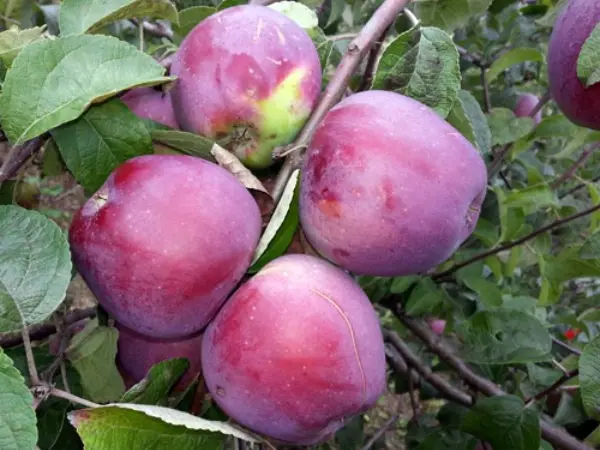
Variety “Imant” is among the resistant to scab – one of the most dangerous and common diseases of fruit trees. Scab develops at high humidity coupled with low temperatures or during rainy seasons. Apple trees are most vulnerable to scab during the flowering period, in the second half of May (this is true for most varieties).
Thus, by planting varieties of apple trees that are resistant to disease or weather, you greatly facilitate tree care and increase the likelihood of a plentiful and healthy harvest.
Description and characteristics of the “Imant” variety
The description of the “Imant” variety should begin with the appearance and parameters of the tree. Apple trees are medium-sized with a not too dense rounded crown, as if raised upwards. Fruiting occurs both on spears and on fruit twigs and annelids.
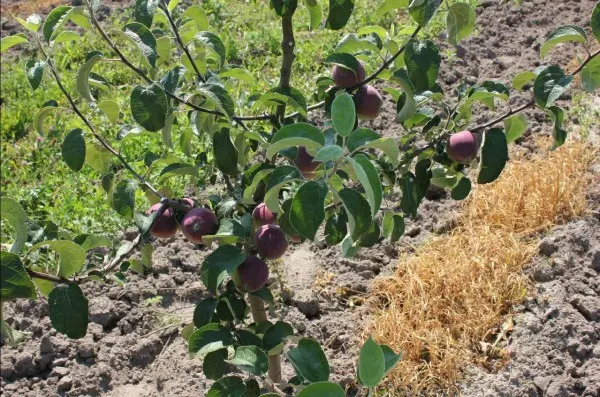
Fruit size varies from medium, weighing about 170-180 grams, to large, weighing more than 200 grams. Apples are rounded, slightly elongated, with distinct ribbing. The main color of the peel is green, but it is difficult to see it from under a solid integument of dark red with shades of purple and purple. The pulp is medium density with a fine-grained structure, crispy, creamy in color with hints of light green. The taste of “Imant” apples is sweet and sour.
100 grams of pulp accounts for:
- 12% dry matter;
- 11% sugars;
- 0,7% titratable acids;
- 8,7 mg of ascorbic acid.
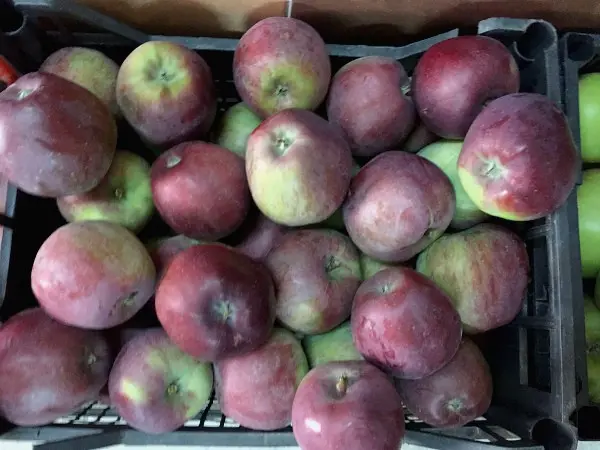
The variety has a very good keeping quality, which allows you to keep apples fresh until the onset of summer, while observing the basic rules for storing fresh fruits.
On clonal rootstocks 62-396, MM 106, 5-25-3 and 54-118, an apple tree bears fruit already for the 2nd year of growing in the garden. In full force, the variety bears fruit starting from the 5th year of growth without transplants, up to 25 kilograms of apples can be harvested from one tree. It should be borne in mind that the apple tree bears fruit stably every year, which allows you to accurately count on a certain amount of the crop.
“Imant” can withstand low temperatures well, and also shows high resistance to scab, bark diseases and cancer.
Video “Imant apple tree”
In this video, you can see the fruiting of the Imant apple tree, as well as learn about its features.
Selection of seedlings
Before proceeding directly to the cultivation of the “Imant” variety, it is necessary to choose the right seedlings. After all, the quality of the seedlings determines how well the tree will grow and what the harvest will be. Any garden store can get a description of the variety and key features of good seedlings, but it is useful to know the nuances of choice for an independent assessment.
First of all, the age of the seedling is important, it is best to buy those that are 1-2 years old. Older seedlings take root worse and enter the fruiting phase later.
To determine the age of a seedling, it is enough to examine it: annuals do not have developed branches, while two- or three-year-olds have 3-4 additional branches located at an angle relative to the trunk.
Carefully inspect the roots and trunk – they should not have growths and damage, and under the bark the trunk should be bright green. The root system should be moist, but at the same time check if it is rotten (pull the root), the roots should remain elastic. The more roots, the better the seedling will take root.
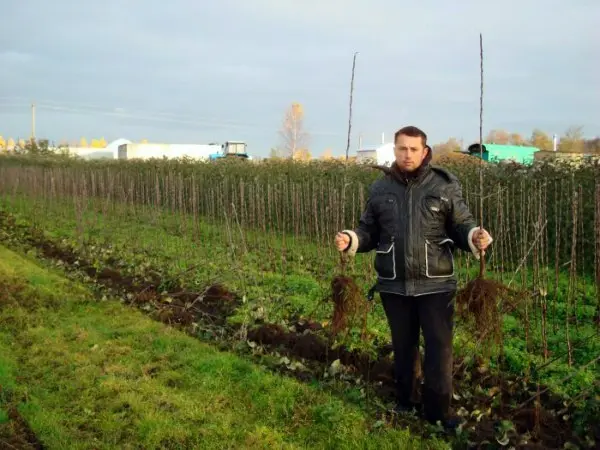
It is also advisable to buy seedlings that do not have leaves, then they can be easily planted in your garden.
Planting and care
Before planting, it is important to mark out the area so that you know exactly how many seedlings will fit. Keep in mind that apple trees tend to form a developed root system that needs enough free space.
A week before planting, it is necessary to dig holes at least 90 centimeters deep, fill it with a mixture of soil, humus and mineral fertilizers. This is necessary in order for the walls of the pit to thicken and dry out a little. The distance between the planting pits should be 3-4 meters, the aisle should also be 3-4 meters. The diameter of the pit should be about 55-70 centimeters, but it directly depends on the spread of the roots of the seedling.
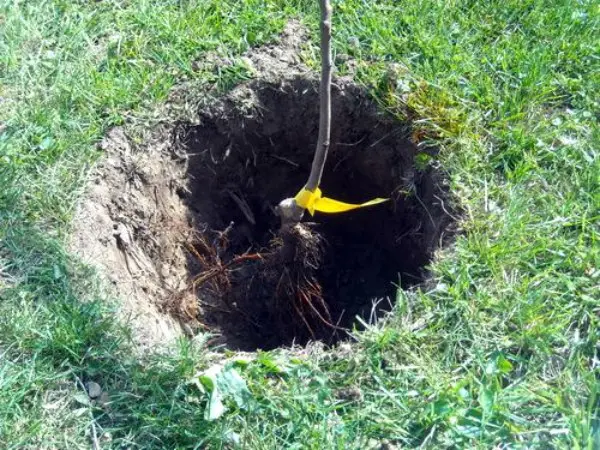
A mound is formed from fertilizers and soil at the bottom of the pit, on which a seedling with straightened roots is placed, and a peg is also fixed to which a young apple tree needs to be tied. Gently cover the roots with earth, tamp it down and water the soil abundantly.
In the first year, regular watering is especially important for apple trees, at least twice a week. The main thing is that the water does not stagnate in the soil, as this adversely affects the root system of the tree. Pruning and crown formation is carried out from the second year of growing a tree in the garden. It is advisable to carry it out before the buds appear on the branches, and it is imperative to cover the sections with garden lime.
Top dressing is an important part of growing Imant apple trees. The tree responds well to the introduction of a solution of mullein, horse manure or bird droppings, as well as superphosphate, potassium, phosphorus and urea.
In order to protect the bark and lower branches of the tree from hares and mice, for the winter the near-stem circle can be overlaid with spruce branches or wrapped with roofing material.
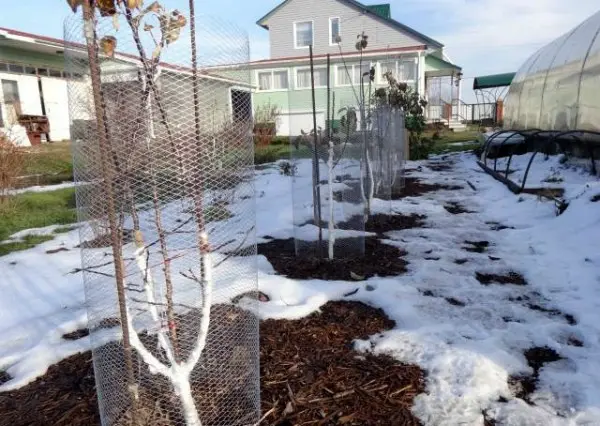
Fighting diseases and pests
Despite the fact that the description of the variety says that it is highly resistant to fungal diseases, in particular scab, you should be aware of what diseases and insects can threaten your garden.
First of all, it is powdery mildew, which affects all parts of the tree. A white coating appears on the leaves or bark, which is easily erased. Over time, it becomes darker, acquiring a brown color and thickens. The development of the disease is accompanied by wilting and falling of leaves, drying of shoots and branches. In addition to damaging an already infected tree, powdery mildew easily overwinters in the bark and then spreads to other trees and plants in the garden. Prevention of the disease is carried out after flowering ends – the trees are treated with copper oxychloride or the drug “HOM” is used.
Another fungal disease is cytosporosis. It appears mainly on the bark in the form of dark brown ulcers. Over time, the ulcers deepen and increase in size, changing color to brick. The bark affected by cytosporosis dies, often along with the branches. To prevent the development of cytosporosis in early spring, the trees must be sprayed with the “HOM” preparation, and then repeat the procedure on the eve of flowering.
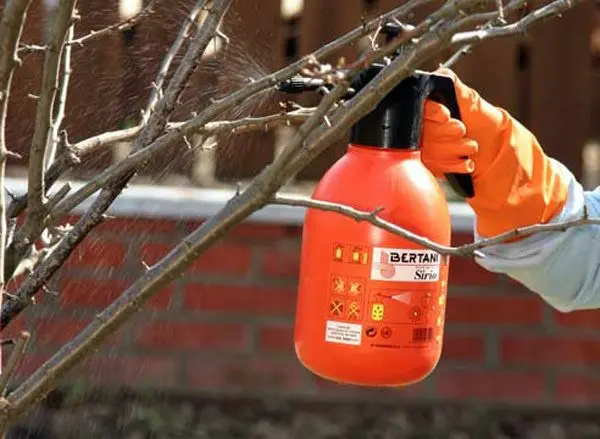
Among insect pests, the red apple mite should be feared, since it easily winters in the folds of the bark, then breeding up to 6 generations of offspring in them. This type of mite feeds on the juice of leaves and young shoots. As a preventive measure, it is necessary to remove the old bark, and also spray apple trees in the spring with Dicofol and Karbofos preparations.
Another unpleasant guest in the apple orchard is the codling moth. Its caterpillars overwinter without any problems in the folds of the bark or the upper layers of the soil. Butterfly activity occurs during the flowering period, when it lays eggs in flowers and on fruits. Due to rapid growth, after 3 weeks, small caterpillars begin to destroy the fruits and leaves of the apple tree.
It is necessary to carefully examine the fruits and leaves of apple trees, removing those on which there are codling moth clutches. Be sure to remove the old bark and spray the tree with chlorophos.
Video “Diseases of apple trees”
This video will introduce you to the most common diseases of apple trees, as well as how to deal with them.









